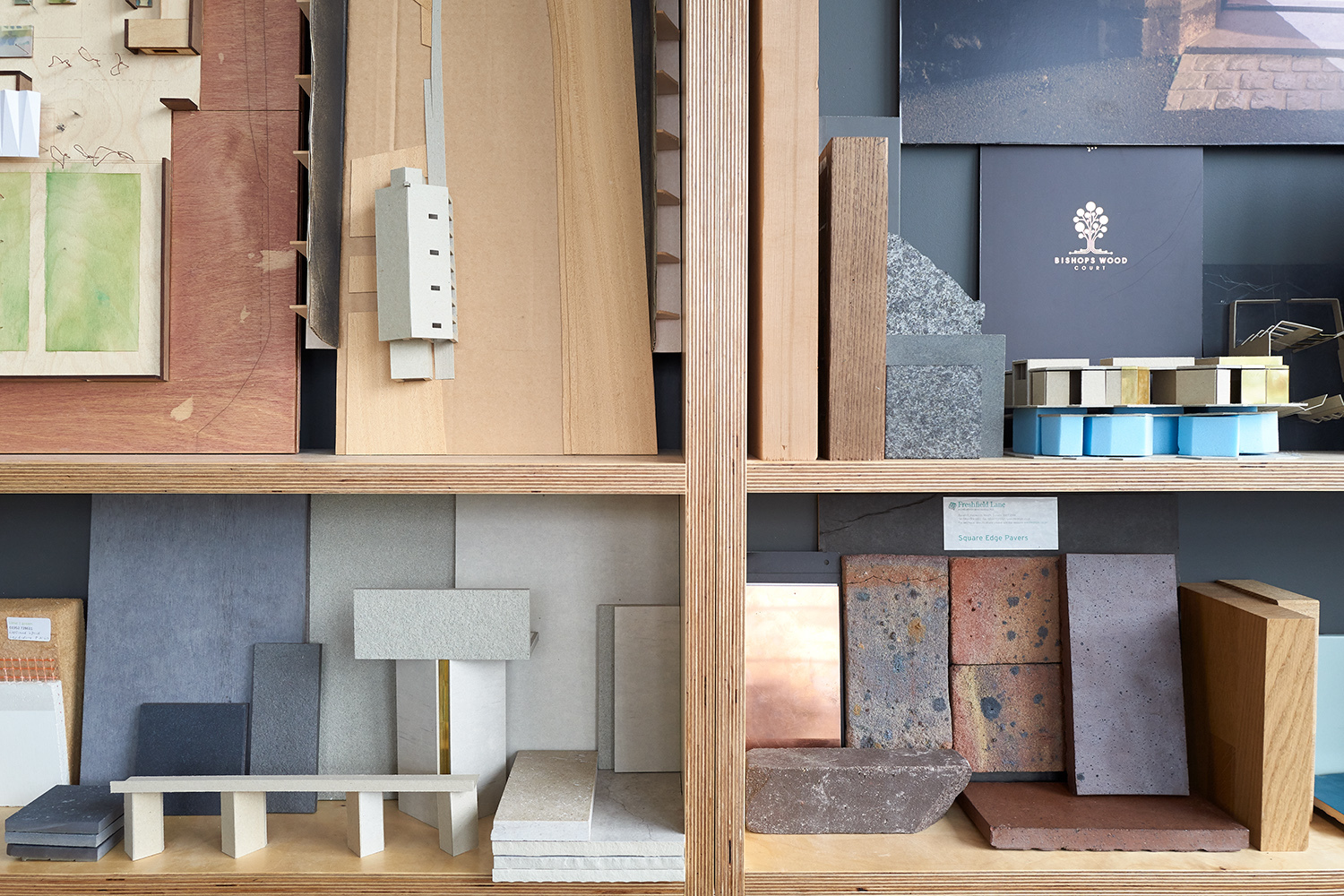
The process of design is rarely linear, and we believe that the best thinking comes to life through a liberated, investigative, hands-on process of making. For us, the ingredient that connects thinking and making is an understanding of craft.
The old idea of architects as master builders is newly pertinent. Our job is to make buildings that read as well close up as they do from far away. This only happens if the architecture is informed by the practicalities of how a building goes together and we orchestrate the many skills needed to achieve this. It’s only with craft in its making that the finished building retains the integrity of the original idea.
Understanding the context of a project isn’t just about first sight; it relies on spending time with a place – and a client. We begin by putting our wellies on, walking the site in different conditions to get a feel for its atmosphere, microclimate and topography before we begin thinking about how we can interpret these characteristics.
Being there also means initiating and developing the connection with our clients, listening to them and trying to ‘see things through their glasses’ so that the design is reflective of their unspoken, as well as spoken, aspirations
Developing a design is never a simple thing. The initial fragment of an idea may come easily, but it’s a hands-on process – as physical as it is thoughtful – that shapes it into something that really sings. It takes tenacity and often a shared drawing, sketched and over-sketched until that happy moment when everything aligns.
Once the idea emerges, our work shifts a gear as we start researching, modelling, analysing and testing it with our collaborators. We chase up clues and draw on references canny and uncanny to make sure that it works on every level, from beauty and buildability through to budget. When we find a concept everyone believes in, we’re committed to making it happen.
Getting approval for a design is an essential part of the making process, but often the most challenging. By treating the authorities, heritage groups and broader community like clients right from the start, their official ‘permission to build’ can be gained more smoothly – a critical step in bringing a project to life.
Buy-in to a design comes from many angles; it’s not just about planning permission. We want everyone, whether they are users, makers, funders or neighbours, to understand the wider vision and feel invested in – and excited by – the project. As negotiators and translators, we are well practiced in making the complicated clear to those we need to bring along with the idea, whether it’s a chat over the garden fence or a more formal consultation.
Our hands-on experience has shown us that the most robust and authentic details are those which are thought out from the point of view of the person who will build them. By listening to the builder, to understand how they will approach the project, we can ensure clarity in the detailed information we produce.
This attitude means there can be confidence in the workmanship, programming and cost of the building. It will not only be more straightforward to deliver, but will also stand the test of time, improving rather than degrading with weather and age.
We want to see our projects through, to close the circle. We see it as a professional duty of care to our clients to protect their interests until the work is fully complete, keeping a hands-on connection and advising on specific aspects of the construction when our expertise is needed.
Still being there at the end means those important early investigations are fully consistent with the final result. If the new architecture is right, the same qualities of site that we first recognised at the beginning of the process should still be there, enhanced, at the end












